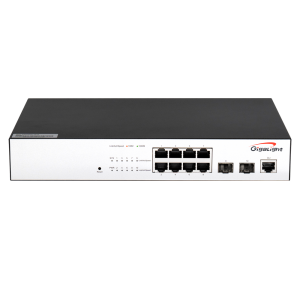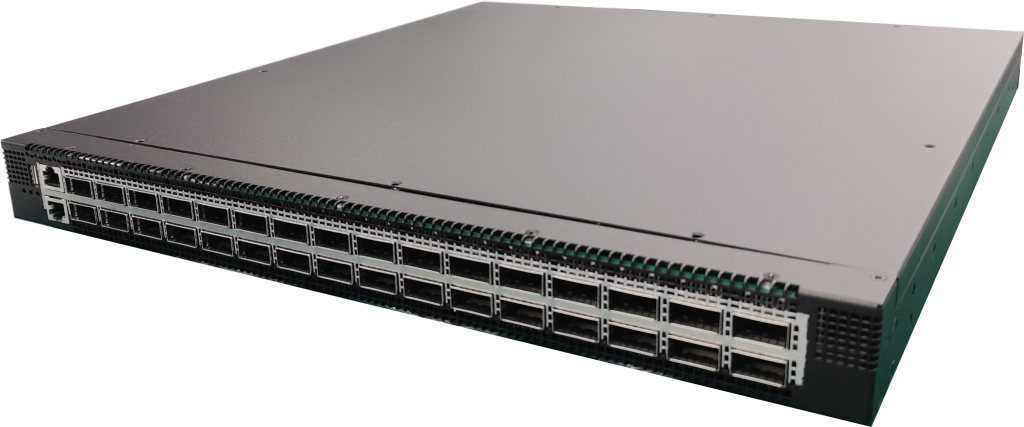While campus switches and data center switches constitute two prominent segments within the realm of networking devices, their distinct natures often remain elusive to many. This article endeavors to illuminate the intricacies of both, offering a comprehensive breakdown of their respective attributes and a side-by-side comparison to foster a clearer understanding of their disparities. By the end, you’ll be equipped with the knowledge to discern between these two vital switch categories with greater precision.
What is a Campus Switch?

A campus switch is tailored for deployment in settings such as educational campuses and corporate office complexes, where it serves as a vital link connecting end-user devices like IP phones, surveillance systems, APs, and ACs. Its design philosophy revolves around catering to the networking demands arising from inter-building or intra-office connectivity within a campus environment. Characteristic attributes of a campus switch encompass:
- Abundant Port Quantity: To connect with a large number of end-user devices, campus switches are equipped with multiple RJ45 ports, allowing flexibility in choosing the number of ports based on actual requirements.
- Excellent Security: campus switches typically come with built-in firewalls and other security features such as ACL and port security. These features enhance network security, effectively preventing unauthorized access and attacks.
- Flexible Management and Configuration: campus switches with management capabilities enable administrators to configure and manage the network. Advanced network management tools allow administrators to easily monitor the entire network, supporting basic management functions such as QoS and VLAN.
- Reliability and Redundancy: To ensure the reliability of office and campus networks, campus switches are usually equipped with fault recovery mechanisms, such as link aggregation and redundant links, ensuring network connectivity even in the event of device failures.
What is a Data Center Switch?

A Data Center Switch is engineered specifically for the sprawling landscapes of large-scale data centers, where it acts as the pivotal link connecting core network components such as servers, storage systems, and various network appliances. This switch is tasked with managing immense volumes of data processing, thereby enabling high-performance computing capabilities and supporting the delivery of cloud-based services. Data center switch, in general, exhibit the following defining features:
- High Performance and Low Latency: Data Center Switches are designed to meet the demands of large-scale data processing and high-performance computing, featuring high data transfer rates and low latency. They typically have ports with speeds of 10G, 25G, or higher.
- Robust Reliability and Redundancy: Given their role in processing vast amounts of data and providing high-performance computing, strong reliability is a crucial characteristic of Data Center Switches. They often feature redundant power supplies, fans, hot-swappable components, enhancing availability and fault recovery. Additionally, these switches boast high capacity, large buffers, virtualization support, FCoE (Fibre Channel over Ethernet), Layer 2 TRILL technology, and traffic identification and control capabilities to ensure stable and reliable data transmission.
- Data Center Features: Data Center Switches typically include features such as VXLAN (Virtual Extensible LAN), MLAG (Multi-Chassis Link Aggregation Group), load balancing, and QoS (Quality of Service). These features enhance network scalability, flexibility, and support link aggregation and redundancy, ensuring a higher quality of service for critical applications or traffic.
- Virtualization: Virtualization is a critical feature of Data Center Switches, breaking through physical limitations by unifying the management of multiple devices and providing complete isolation for specific devices.
- Large Capacity and Scalability: To support connections for numerous servers and storage devices, Data Center Switches usually offer a plethora of port configurations and flexible scalability. They can be expanded through stacking and modular configurations to meet the evolving network demands of growing data centers.
Campus Switch vs Data Center Switch
In the preceding sections, we easily grasped the concepts of campus switches and Data Center Switches. Now, what are the distinctions between them? I will present a table and elucidate their significance:
| Campus Switch | Data Center Switch | |
| Application Scenarios | Campus or small office buildings | Large data center |
| Port Speeds | 1G Port | 10G Port to 800G Port |
| Performance and Latency | Moderate performance and latency | High performance, low latency |
| Scalability | Elementary scalability | High scalability |
| Reliability and Redundancy | Basic reliability and redundancy | High reliability and redundancy |
| Management Features | Simple network management functions | Advanced network management features |
| Security | Basic security | Strong security |
- Application Scenarios: Data Center switches are designed specifically for the core network equipment in large-scale data centers, aimed at handling massive data, providing high-performance computing, and supporting cloud services. On the other hand, campus switches are predominantly deployed in areas like campuses and office buildings, connecting IP phones, surveillance cameras, etc., to meet the network requirements between multiple buildings or offices within a campus.
- Port Speeds: Due to the need to process substantial amounts of data, Data Center Switches typically have port speeds of 10 Gigabits per second or higher. In contrast, campus switches, catering to end-user devices, usually feature port speeds of 1 Gigabit per second.
- Performance and Latency: Data Centers demand high-performance computing and cloud services, necessitating robust data processing capabilities and lower latency. Conversely, campus switches, handling comparatively smaller amounts of data, have lower performance and latency requirements, making them suitable for general office and campus networks.
- Scalability: Data Center Switches exhibit high scalability to accommodate the ever-growing demands of networks. campus switches, offering smaller scalability, have their required connections more or less determined during the initial deployment phase.
- Reliability and Redundancy: Data Center Switches are usually equipped with features such as redundant power supplies, fans, and hot-swappable components to ensure continuous network operation. Conversely, while lacking some of these redundant features, campus switches incorporate fault recovery mechanisms.
- Management Features: Given the need to handle large volumes of data and complex network structures, Data Center Switches boast advanced network management capabilities to meet the intricate demands of data centers. On the other hand, campus switches have relatively simpler management functionalities.
- Security: Data Center Switches, dealing with substantial data that may include confidential files, require robust security features to ensure data integrity. In contrast, campus switches, connecting to end-user devices, do not demand high-security measures and typically feature basic security functionalities.
Conclusion
Campus switches and Data Center Switches exhibit notable differences in their applicable scenarios, functionalities, and principles. campus switches are designed for campuses and small office buildings, connecting end-user devices with adequate performance, simple network management features, and basic scalability. On the other hand, Data Center Switches are tailored for large-scale data centers, tasked with processing substantial data, providing high-performance computing and cloud services. They boast high performance, low latency, advanced network management capabilities, and flexible scalability.
